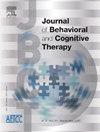Efficacy of online mental health education on occupational burnout among medical staff
IF 1.6
Q3 PSYCHIATRY
引用次数: 0
Abstract
Objective
To understand the levels of occupational burnout, anxiety, and depression among medical staff, to construct a mental health model for medical staff based on personality traits and demographic variables. Design and validate the effectiveness of health education via an online platform.
Methods
Using an online questionnaire platform, demographic and occupational information was collected from healthcare workers in the medical community of the First People’s Hospital of Linping District. The Eysenck Personality Questionnaire (EPQ), Job Burnout Inventory, Generalized Anxiety Disorder Self-Assessment Scale-7 (GAD-7), Patient Health Questionnaire-9 (PHQ-9), and psychological introspection were used to build a mental health model. For those identified with occupational burnout, an online mental health education program was conducted once a week for four weeks, focusing on self-emotional identification and management. The effectiveness of the program was re-evaluated one month later.
Results
Out of 1127 questionnaires, the rate of positive occupational burnout was 22.1%. The analysis revealed that age (OR = 0.965, 95%CI 0.944–0.987), experiencing medical violence (OR = 2.585, 95%CI 1.829–3.654), treatment identification (OR = 0.831, 95%CI 0.753–0.917), medical versus nursing positions (OR = 0.654, 95%CI 0.468–0.914), administrative versus nursing positions (OR = 0.436, 95%CI 0.229–0.828) were significantly associated with the occurrence of occupational burnout. In addition, the EPQ test indicated that introverted personality (OR = 2.078, 95% CI 1.282–3.367, P = 0.003) and unstable personality (OR = 3.365, 95% CI 2.172–5.214, P < 0.001) increased the risk of occupational burnout, whereas extroverted personality (OR = 0.394, 95% CI 0.231–0.672, P = 0.001) and stable personality (OR = 0.347, 95% CI 0.231–0.522, P < 0.001) reduced it. Before and after the online mental health education intervention, self-comparison found that the participants showed significant improvement in emotional exhaustion (t = 3.520), depersonalization (t = 2.035), reduced personal accomplishment (t = 4.749), total burnout score (t = 5.952), PHQ-9 (t = 4.017), and GAD-7 (t = 4.234). However, compared to healthcare workers who have experienced medical violence, the average improvement rate in overall burnout scores for those who have not experienced medical violence is 9.28% higher (t = 2.172).
Conclusion
With increasing age, the risk of occupational burnout may decrease, while experiencing medical violence, being in a nursing position, and having an introverted or unstable personality are significant risk factors for occupational burnout. Online mental health education is effective in improving occupational burnout among healthcare workers, but its effectiveness is impacted by experiencing medical violence. However, this study’s limitations include potential underestimation of the education’s effectiveness due to insufficient adherence measures and the use of a single-institution sample, which may limit generalizability.
在线心理健康教育对医务人员职业倦怠的影响
目的 了解医务人员的职业倦怠、焦虑和抑郁水平,构建基于人格特征和人口统计学变量的医务人员心理健康模型。方法利用在线问卷平台,收集临平区第一人民医院医护人员的人口统计学和职业信息。采用艾森克人格问卷(EPQ)、工作倦怠量表、广泛性焦虑症自评量表-7(GAD-7)、患者健康问卷-9(PHQ-9)和心理自省建立心理健康模型。对于那些被确定为职业倦怠的人,每周进行一次在线心理健康教育计划,为期四周,重点是自我情绪识别和管理。结果在 1127 份问卷中,职业倦怠阳性率为 22.1%。分析表明,年龄(OR = 0.965,95%CI 0.944-0.987)、医疗暴力经历(OR = 2.585,95%CI 1.829-3.654)、治疗识别(OR = 0.831,95%CI 0.753-0.917)、医疗岗位与护理岗位(OR = 0.654,95%CI 0.468-0.914)、行政岗位与护理岗位(OR = 0.436,95%CI 0.229-0.828)与职业倦怠的发生有显著相关性。此外,EPQ 检验表明,内向型人格(OR = 2.078,95%CI 1.282-3.367,P = 0.003)和不稳定型人格(OR = 3.365,95%CI 2.172-5.214,P < 0.001)增加了职业倦怠的风险,而外向型人格(OR = 0.394,95% CI 0.231-0.672,P = 0.001)和稳定型人格(OR = 0.347,95% CI 0.231-0.522,P <0.001)降低了职业倦怠的风险。在线心理健康教育干预前后的自我比较发现,参与者在情绪衰竭(t = 3.520)、人格解体(t = 2.035)、个人成就感降低(t = 4.749)、职业倦怠总分(t = 5.952)、PHQ-9(t = 4.017)和 GAD-7 (t = 4.234)方面均有显著改善。然而,与经历过医疗暴力的医护人员相比,未经历过医疗暴力的医护人员倦怠总分的平均改善率要高出 9.28% (t = 2.172)。结论随着年龄的增长,职业倦怠的风险可能会降低,而经历过医疗暴力、从事护理岗位、性格内向或不稳定则是职业倦怠的重要风险因素。在线心理健康教育能有效改善医护人员的职业倦怠,但其效果会受到医疗暴力事件的影响。然而,这项研究的局限性包括:由于没有采取足够的坚持措施,可能会低估教育的效果;使用的是单一机构样本,可能会限制其普遍性。
本文章由计算机程序翻译,如有差异,请以英文原文为准。
求助全文
约1分钟内获得全文
求助全文
来源期刊

Journal of Behavioral and Cognitive Therapy
Psychology-Clinical Psychology
CiteScore
3.30
自引率
0.00%
发文量
38
审稿时长
60 days
 求助内容:
求助内容: 应助结果提醒方式:
应助结果提醒方式:


